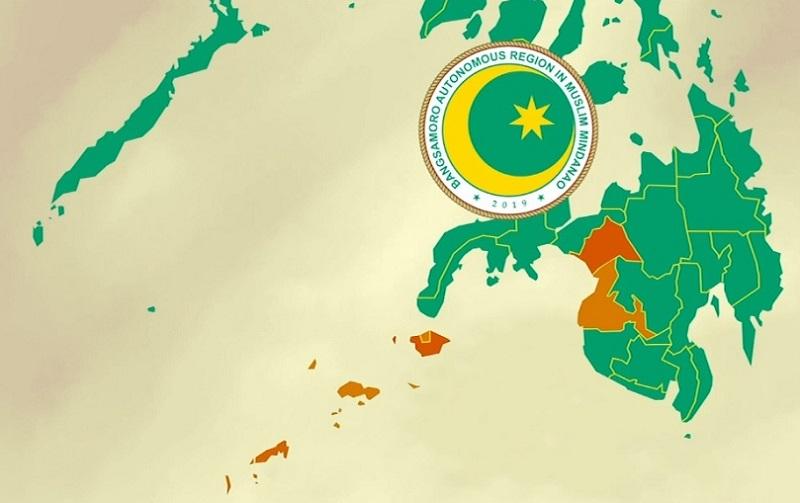Action plan vs. violent extremism yet to reach many Bangsamoro beneficiaries –study
The majority of intended beneficiaries in Bangsamoro of a national action plan (NAP) against violent extremism are unaware of the program, according to a study by the Institute for Autonomy and Governance (IAG). IAG, a think tank focusing on governance and security in southern Philippines, said that its research into the implementation of the National Action Plan […]


The majority of intended beneficiaries in Bangsamoro of a national action plan (NAP) against violent extremism are unaware of the program, according to a study by the Institute for Autonomy and Governance (IAG).
IAG, a think tank focusing on governance and security in southern Philippines, said that its research into the implementation of the National Action Plan on Preventing and Countering Violent Extremism (NAP P/CVE) in the Bangsamoro Region showed only 40% of the intended beneficiaries are aware of the program.
The Department of the Interior and Local Government (DILG) launched the NAP P/CVE in 2019.
The IAG study also found that 52% were more familiar with the Bangsamoro Task Force on Ending Local Armed Conflict (BTF-ELAC).
“Between the NAP P/CVE na document adopted officially at saka ‘yung NTF-ELCAC, mas nauna ‘yung ELCAC…’Yun ang naunang nag-take form at sumunod and NAP P/CVE, kaya yang awareness niya, mababa,” said AIG research associate Noor Saada.
(The NTF-ELCAC was implemented before the NAP P/CVE. It took form first, which is why there is less awareness about the NAP P/CVE.)
“Ibig sabihin ‘yung nasimulan, tama naman kasi mataas ang awareness sa provincial level… However, galing dun nakulangan na ‘yung mga tao pagdating sa baba. Hindi na siya popular kasi ang lagi nila sinasabi sa amin is ‘yung Task Force ELAC,” Saada added.
(This means there is an awareness of the NAP P/CVE at a provincial level but people in communities remain unaware of it. They are more familiar with the BTF-ELAC.)
The BTF-ELAC is a multi-sectoral body established to uphold peace initiatives in the Bangsamoro Region.
In conducting the study, the researchers interviewed 50 key informants at the national, regional, and local-government levels and conducted ten focus groups with 78 sectors and community leaders. They also surveyed 150 beneficiaries of various programs and projects identified as part of the NAP P/CVE.
Findings showed there is a warm response from the national agencies, the Bangsamoro government, local government units, and civil society organizations on the implementation of the localized action plan, saying it is a “holistic strategy that can potentially make a difference in the fight against violent extremism.”
However, the structures and mechanisms of NAP P/CVE and BTF-ELAC are “still evolving” including the monitoring, evaluation, accountability and learning, “which raises the questions of waste, duplication, and lack of coordination among the programs and projects.”
“Key informants, FGD discussants, and beneficiaries surveyed also flag funding and budgeting issues as key challenges,” the study added.
The BTF-ELAC has likewise started programs in line with P/CVE such as Project TuGon, which helps in the reintegration of rebel surrenderees, and the Bangsamoro Community Resiliency Program (BCORP), which targets to strengthen community resilience and services for children, adolescents, and women living in vulnerable communities.
Around 98% of the beneficiaries also said that the programs under the NAP P/CVE contribute to the prevention and countering of violent extremism, but added that they have also encountered several problems during the implementation including the lack of continuing support after the end of the program and suspicions of bias and discrimination in choosing the beneficiaries of cash handouts, housing, and material support for the reintegration into society.
To address the challenges, the researchers recommended the following:
- activation of the monitoring, evaluation, accountability and learning mechanism at the regional level
- designing culturally sensitive programs at the LGU level
- ensuring sustainability of LGU-level programs
- securing adequate and consistent funding
- clarifying suspicious of unfair selection of beneficiaries
- clarifying roles, responsibilities, and funding mechanisms
DILG responds
“I do not look at it as a gap, ‘yung result na looking at it at the national government, very strong ang awareness pero sa region hindi because nag-iba in terms of how they call the program of NAP P/CVE. This is through the BTF-ELAC,” said Joan Hope Talibas of the DILG P/CVE Project Management Office.
(I do not look at it as a gap because the beneficiaries just used other terms on calling the programs of NAP P/CVE. This is through the BTF-ELAC.)
“Very relevant ang result ng IAG because that would help us to harmonize,” Talibas added.
(The results are very relevant because that would help us to harmonize.)
The DILG launched the NAP P/CVE to fight violent extremism in the country in 2019. Under the national action plan, the government is tasked to formulate and adopt comprehensive, adequate, efficient, and effective anti-terrorism plans, programs, and counter-measures to suppress terrorism in the country and protect the people from acts of terrorism. — BM, GMA Integrated News














